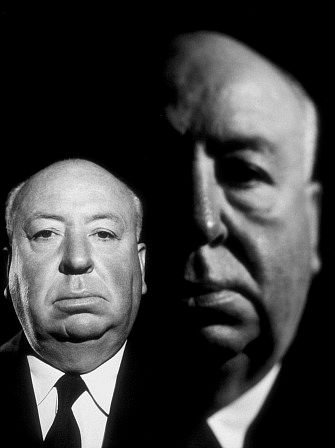! Norma Enriqueta Basilio de Sotelo
2 Robyn Perry
3 Swin cash
4 Konstantin Kondylis
Ans : 1


A sprinter who participated in these Olympics; the first woman to light the main Olympic cauldron.
Norma Enriqueta Basilio (born July 15, 1948 in Mexicali, Baja California) is a Mexican athlete. She often called "Queta Basilio", made history by being the very first woman ever to light the Olympic Cauldron. She was the last one who carried the flame during the 19th Summer Olympic Games in Mexico City on October 12, 1968.
She was a national athletics champion in 80 mts hurdles. She was considered in her times as the best female athlete. She also carried the Olympic torch during the Athens 2004 relay in Mexico City.
Nowadays, she plays very important roles in Mexican politics and sports.
 Mexico 1968 torch
Mexico 1968 torch
aluminium fuel used for the final torch was certainly spectacular, but also managed to injure its holder.Runners were also burned by the solid-fueled torch for the 1968 Mexico Games
In Olympia, Greece, on the clear, sunny morning of August 23, 1969, Greek actress Maria Mosxoliou placed a small amount of resin in a vessel containing a concave metal mirror. Reflected rays of intense sunlight had heated the vessel to incandescense, and at 10:30 a.m. the resin ignited and the Olympic Flame flared into existence.
Every detail of the Route of the Forch was carefully planned by the Organizing Committee. It was decided that the Torch should follow the course of Columbus`s first voyage to the New World, thus symbolizing the union of the classic cultures of the Mediterranean with those of America and recalling the places and events associated with this discovery.
The tree principal intermediate points along the Route of the Torch were Genoa, Italy, birthplace of Christopher Columbus; Palos, Spain, the port from which he embarked on his first voyage of discovery; and the island of San Salvador, the first land he touched in the New World.
The Organizing Committee received the colla boration of the national Olympic committees of Greece, Italy and Spain, and through them the cooperation of their respective governments. Contrary to precedent, athletes from each country through which the Flame passed relayed the Olympic Torch within their national territory. (In the past, the host nation provided runners for the entire route.) The runners from the various countries wore identical uniforms designed by the Organizing Committee of the Games. They were completely white, with the exception of the shirt, which was of colors taken from the national flags of the respective countries, and bore a design of the dove of peace and the MEXICO 68 logotype.
After the first lap of the journey-that from Olympia to Pyrgos-runners swept through the towns of Amalias, Patras, Aigion, Xylokastron, Kiaton, Corinth, Megara and Eleusis to Athens, where a special ceremony was held in the Panatheneum Stadium on August 24. The following day the Flame continued on to the port of Piraeus and departed for Italy aboard the Greek destroyer H.H. Navarino.
2 Robyn Perry
3 Swin cash
4 Konstantin Kondylis
Ans : 1
A sprinter who participated in these Olympics; the first woman to light the main Olympic cauldron.
Norma Enriqueta Basilio (born July 15, 1948 in Mexicali, Baja California) is a Mexican athlete. She often called "Queta Basilio", made history by being the very first woman ever to light the Olympic Cauldron. She was the last one who carried the flame during the 19th Summer Olympic Games in Mexico City on October 12, 1968.
She was a national athletics champion in 80 mts hurdles. She was considered in her times as the best female athlete. She also carried the Olympic torch during the Athens 2004 relay in Mexico City.
Nowadays, she plays very important roles in Mexican politics and sports.
aluminium fuel used for the final torch was certainly spectacular, but also managed to injure its holder.Runners were also burned by the solid-fueled torch for the 1968 Mexico Games
In Olympia, Greece, on the clear, sunny morning of August 23, 1969, Greek actress Maria Mosxoliou placed a small amount of resin in a vessel containing a concave metal mirror. Reflected rays of intense sunlight had heated the vessel to incandescense, and at 10:30 a.m. the resin ignited and the Olympic Flame flared into existence.
Every detail of the Route of the Forch was carefully planned by the Organizing Committee. It was decided that the Torch should follow the course of Columbus`s first voyage to the New World, thus symbolizing the union of the classic cultures of the Mediterranean with those of America and recalling the places and events associated with this discovery.
The tree principal intermediate points along the Route of the Torch were Genoa, Italy, birthplace of Christopher Columbus; Palos, Spain, the port from which he embarked on his first voyage of discovery; and the island of San Salvador, the first land he touched in the New World.
The Organizing Committee received the colla boration of the national Olympic committees of Greece, Italy and Spain, and through them the cooperation of their respective governments. Contrary to precedent, athletes from each country through which the Flame passed relayed the Olympic Torch within their national territory. (In the past, the host nation provided runners for the entire route.) The runners from the various countries wore identical uniforms designed by the Organizing Committee of the Games. They were completely white, with the exception of the shirt, which was of colors taken from the national flags of the respective countries, and bore a design of the dove of peace and the MEXICO 68 logotype.
After the first lap of the journey-that from Olympia to Pyrgos-runners swept through the towns of Amalias, Patras, Aigion, Xylokastron, Kiaton, Corinth, Megara and Eleusis to Athens, where a special ceremony was held in the Panatheneum Stadium on August 24. The following day the Flame continued on to the port of Piraeus and departed for Italy aboard the Greek destroyer H.H. Navarino.

